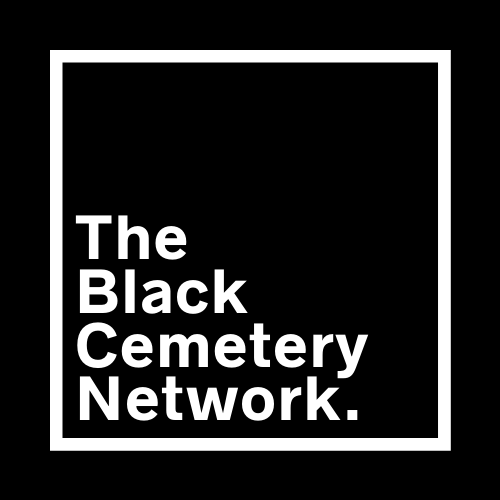SITE DIRECTORY
To learn more about any of the BCN sites listed below, click “Read more” to view individual site briefs. To search for a specific BCN site, use the search bar below:
GEER CEMETERY
GEER CEMETERY
FOUNDED: 1877
ADDITONAL NAMES: City Cemetery, Ferrell Road Cemetery
AFFILIATION(S):
Friends of Geer Cemetery
HISTORY:
Geer Cemetery is in Durham, NC. The earliest origins of Geer date to a deed dated March 28, 1877, which documents the sale of the land to John O’Daniel, Nelson Mitchell, and Willis Moore from Frederick and Polly Geer. Two additional deeds have been found purchasing additional land. These deeds contain additional names as the purchasers leading to the speculation that there was some type of organization that was xx the cemetery. The cemetery was initially in Orange County and became part of Durham County when Durham County was created in 1881. Geer Cemetery was an active burial ground until the 1930s. Of the three largest cemeteries created by African American in the late 1800s, it is the only one that has not been affected by urban development. There are over 2,000 burials at Geer Cemetery there are many life stories to tell. The people in Geer Cemetery were ministers, entrepreneurs, business owners, educators, laborers, professionals, and more. Many of the early burials were people who had been enslaved and settled in Durham to work in the tobacco industry. Many of these early settlers were landowners, creating the Hayti township within Durham. Hayti became the social and cultural center of Durham’s African American community and a model for self-sufficient African American communities in the South.
BCN Contact Information:
Debra T Gonzalez
taylorgg.dl@gmail.com
friendsofgeercemetery.org (under construction)
Stanton Family Cemetery
STANTON FAMILY CEMETERY
FOUNDED: 1853
ADDITONAL NAMES: African American Heritage Preservation Foundation
AFFILIATION(S):
Preservation Virginia
HISTORY:
Started in 1853, the Stanton Family Cemetery is a very rare surviving burying ground established by free blacks prior to the Civil War. The Stantons were one of the few extended free black families living in rural Virginia at the height of the slavery period.
The unfenced plot contains at least thirty-six marked burials, a large number for African American family cemeteries, and likely holds additional unmarked burials. Many of the graves have simple uninscribed headstones and footstones of the local slate. The cemetery was originally part of the a forty-six-acre farm purchased in 1853 by Nancy and Daniel Stanton. Although the family moved from the homestead in 1930, it retained ownership of the land and the cemetery and continued family burials there. The last occurred in 1941 when Harriet Stanton Scott, granddaughter of Nancy and Daniel Stanton, was interred.
The Stanton Family Cemetery was placed on the National Register of Historic Places in 1993. The cemetery became the first known privately held free African American family cemetery to be placed on the National Register of Historic Places.
In 2020, we conducted a Ground Penetration Radar survey and discovered an additional 13 unmarked graves bringing the total of burials to 49.
BCN Contact Information:
African American Heritage Preservation Foundation, Inc.
ringram@aahpfdn.org
LAUREL CEMETERY
LAUREL CEMETERY
FOUNDED: 1852
ADDITONAL NAMES: None
AFFILIATION(S): None
HISTORY:
Laurel Cemetery was incorporated in 1852 as a nondenominational cemetery for African Americans of Baltimore, Maryland. In its early years, it was a premier burial site for people across Black Baltimore’s socioeconomic spectrum. However, by the 1930s, the site was overgrown and garbage strewn due to years of improper maintenance by the cemetery’s owners. In response to local neighborhood complaints and economic motivations on the part of the owners, legislation was successfully introduced by a local politician in 1957 to allow the demolition and sale of the property for commercial purposes. Although lot owners and NAACP lawyers petitioned to stop the demolition, the bulldozing proceeded following the removal of a few hundred graves to a new Laurel Cemetery site approximately fifty (50) miles away in Carroll County, Maryland. Today, the Belair-Edison Crossing shopping center occupies the footprint of the old cemetery. In the case of Baltimore’s Laurel Cemetery, the absence of historical memory and material culture signifying the existence of an important historical site is compelling. Although Baltimore’s history shows the loss of many cemeteries regardless of race or ethnicity, the size of the property (22 acres), number of burials, notoriety of individuals, and legal opposition to demolition make the Laurel Cemetery stand out as an important case study with broad implications. In particular, the overall number of burials is an important aspect of the site. The exact number will never be known as cemetery records were lost and Baltimore City death certificates do not start until 1875. Additionally, the property was known to have been used as a burial site for free and enslaved African Americans prior to its formal 1852 incorporation. Despite these blind spots, our review of Baltimore City death certificate has thus far revealed more than 13,000 burials from Laurel Cemetery (after a search of less than 30% of relevant records). At this point, it is safe to estimate that more than 20,000 burials will be revealed solely from available death certificate records.
BCN Contact Information:
Elgin Klugh
eklugh@coppin.edu
http://laurelcemetery.omeka.net/




